New Jersey Butterfly Club
A chapter of the North American Butterfly Association (NABA)
Red Admiral
Vanessa atalanta
Identification: Medium—2.1". Above: Very striking pattern. FW and HW blackish-brown with bright red-orange bands on edge of HW and across mid-FW. Below: HW is dark and mottled. FW shows red, white, and blue.
NJ Status and Distribution: Nonresident. Probably does not regularly overwinter north of the Carolinas. NJ is normally repopulated by migrants from the South, and large irruptions occur about once a decade—most recently in 2012. Fairly common and widespread (in normal years) to abundant (in irruption years).
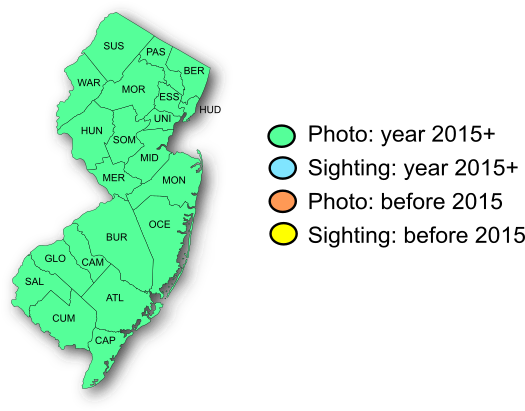
Habitat: Varied. Openings within and near woodlands, but also dry or moist fields far from woods. Can be attracted to gardens with overripe fruit.
Flight Period: Two to three broods resulting in an extended flight period from late March into late November with peaks in May, early summer, and late August-September. Extreme dates: North Jersey 3/24—12/13; South Jersey 1/1—12/31.
Caterpillar Food Plants: Nettles (Urtica).
Overwintering Stage: Adults and sometimes pupae, but generally does not overwinter in North Jersey.
Good Locations: Can be seen almost anywhere. However, fields with the host plant are best. During heavy migrations can be seen literally anywhere.
Comments: The populations of Red Admiral may fluctuate more than any other NJ species, with none or very few reported some years and perhaps tens of thousands the next year. Highly migratory.
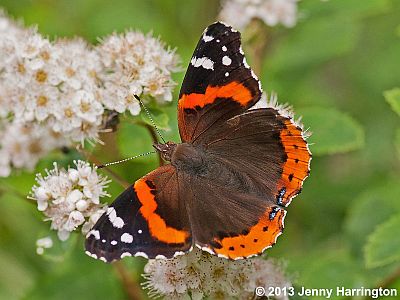
Blairstown, Warren Co., NJ, 7/20/10, on Meadowsweet.
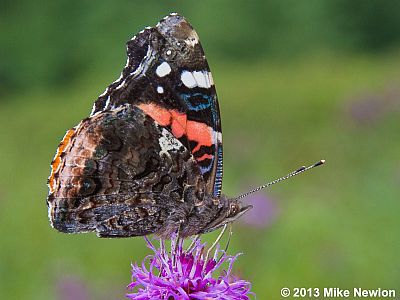
Glenhurst Meadows, Somerset Co., NJ, 7/31/12, on New York Ironweed.
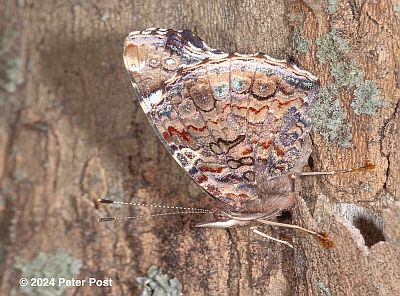
Aberrant individual, Duke Farms, Somerset Co., NJ, 6/27/10.
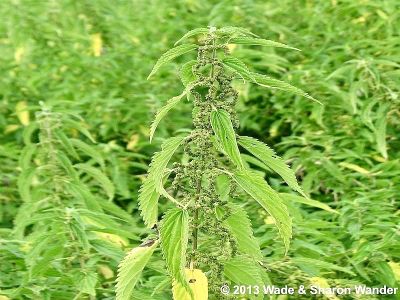
Stinging Nettle (Urtica dioica) and the very similar Tall Nettle (U. procera) are two important host plants for Eastern Comma, Milbert's Tortoiseshell, and Red Admiral.